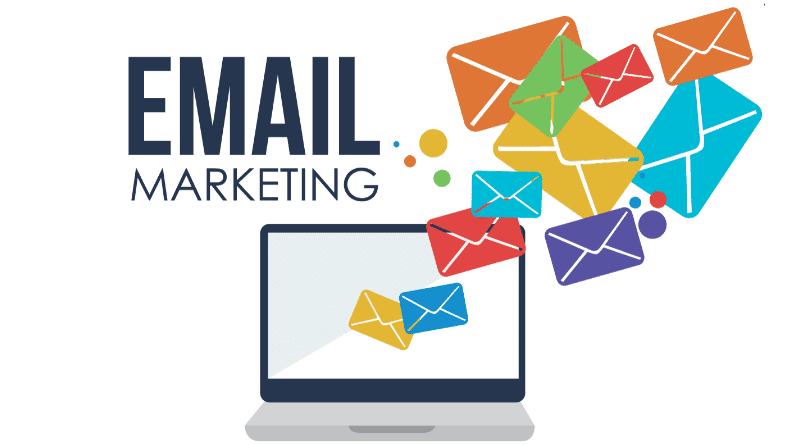Email marketing holds a special place in digital marketing today and if you can plan and execute it right, the returns from email marketing can be great. Before getting into the details of how you can make the most out of email marketing, it might be a good idea to understand email marketing and its impact.
In brief, email marketing is promoting your products and services using email. Here’s a more detailed definition of email marketing: email marketing is planned use of bulk emails to achieve a specific purpose, like driving the recipients towards the next stage of a marketing funnel.
Even in the world of powerful social media platforms, email marketing has only grown from strength to strength. But why is email marketing so powerful, so popular?

There are a number of reasons, but two reasons stand out. Firstly, email marketing has an eye-popping ROI. CampaignMonitor reports that for every dollar invested in email marketing fetches a giant return of $44. In other words, email marketing has an ROI of 4400%!
Secondly, email has survived the onslaught of various channels of communication. Even project management tools were thought to be big rivals of emails. And yet the very founder of one such tool, Stewart Butterfield of Slack, confessed “email is the cockroach of the internet”, meaning there was no way email was going to die any time soon.
Now that we’ve better understood the importance of email and email marketing, let’s look at the top 4 ways to get the maximum out of your email marketing.
1. Build your own list
It is important to build your own mailing list. Easy as it may sound, it’s not a good idea to purchase email lists.
Yes, building an email list takes time. It may be months before you have a substantial number on your mailing list. Yet, it’s worth it. Purchased or rented email lists, on the other hand, are never advisable.
There are a number of reasons why purchased email addresses are not good for your business. To begin with, it’s illegal in many countries, like Canada, to use purchased email lists for marketing or outreach purposes.
Secondly, as MailChimp says, you don’t know the interest and overall preferences of the recipients. For all you know, you might be selling outdoor sports equipment while most of the people on the list may be retired, senior citizens who are not active outdoor. That means you’re mailing to the wrong audience.
Finally, purchased lists have a very high risk of carrying spam traps. Spam traps are email addresses specifically meant to catch spammers. If you send to these addresses, you might be penalized.
Building your own list ensures you have a legally valid set of addresses who are clearly interested in what you have to sell. You can get more traction to your site by marketing, writing guest posts or simply growing organically, but you must build your own list.
2. Clean your list
When you’ve built your mailing list, it means visitors to your website have signed up voluntarily to accept emails from you. That includes newsletters and other promotional emails. So basically your email database is a forever valid list of addresses of people interested in what you have to say, right?
Well, not forever.
Estimates vary slightly, but the general consensus is about 30% of typical email business addresses – like somename@businessdomain(dot)com – die every year. That means out of every 100 email addresses on your list, only 70 will be valid by the end of the year.
If you continue using the same list without removing the invalid or dead emails, your email bounce rate will go high. And soon you might be labeled a spammer.
To avoid that, it is advisable to verify email addresses regularly. Email verification is the process by which every email address on your mailing list is verified to separate valid and invalid email addresses. Email verification is offered as SaaS (Software as a Service). You can refer to this blog to compare various services or simply Google ‘email verification companies’.
3. Play by the rules
Email marketing, or rather the process of sending an actual email is so easy and inexpensive almost all business uses it. As a matter of fact, it’s easy to send and receive emails on all devices as well.
And it’s led to a problem that’s gradually grown. Some unscrupulous companies have abused email marketing to no end. Spammers have flouted every rule and sent out unsolicited emails, sometimes jamming mailboxes. ‘Marketers’ who cared little about ethics have sent out emails to every address they could lay their hands on.
To prevent all this, various laws have been put in place in various countries. The US has the CAN-SPAM Act while Canada has CASL. And more recently, the entire European Union has brought into effect the rather strict GDPR.
These laws are stringent and punishments are rather harsh. So the message is loud and clear: play by the rules or face tough action. Hence it’s important for marketers to make sure they are following the latest regulations. This will help them from getting into trouble. It’s important to avoid such mistakes that businesses commit and stay in the game for the long run.
4. Segment. Experiment. Measure. Repeat.
As your email list grows, you’ll want to find better ways of making the mailing list more efficient. And that’s where segmentation comes in.
Probably the first thing you can do is to segment the list. Segmenting is dividing the email list based on various criteria. You could, for instance, divide the list based on their engagement. Or you could segment on the basis of gender. HubSpot provides 30 ways to segment a list, and there could be more too.
After that, you can experiment with how and when you send emails and what you write. You can test what sort of headlines work better or what times do your recipients prefer.
The next stage is where you measure the outcomes. See whether sending emails on Monday morning is more (or less effective) than sending emails on Wednesday afternoon. Keep learning and recording.
That’s how you put your business in a learning loop.
So these were my set of 4 most important things for successful email marketing. I’d love to have you add to this, using the comments section below. Happy marketing!



